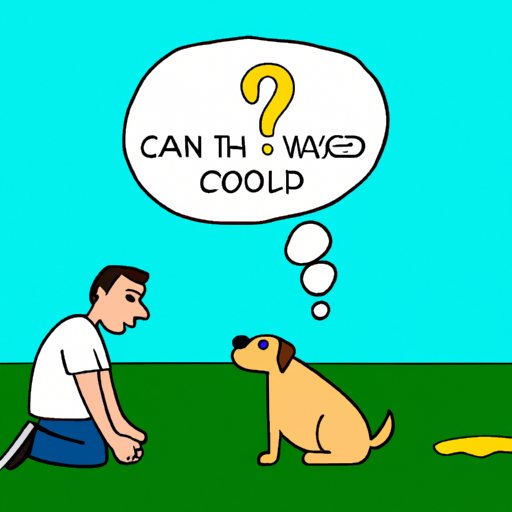As a caregiver to your beloved canine companion, it’s natural to worry when you see them feeling unwell. One of the most disconcerting signs of distress in dogs is vomiting, particularly when the vomit appears yellow. This article aims to shed light on what yellow vomit could mean for your dog and how you should respond.
1. Understanding the Basics of Canine Vomiting
Vomiting is not an uncommon occurrence in dogs. They have a much more sensitive gastro-intestinal tract compared to humans, which makes them prone to vomiting. But what does it mean when the vomit turns yellow?
Typically, yellow vomit is an indication that your dog’s stomach is empty, and they are throwing up bile, a common digestive fluid produced in the liver. It’s not always a cause for alarm, but it’s essential to understand the circumstances surrounding this event.
2. Reasons for Yellow Vomit in Dogs
Several reasons could explain why your dog is vomiting yellow bile. Here are a few:
-
Bilious Vomiting Syndrome (BVS): This condition occurs when bile, a digestive fluid, irritates your dog’s stomach lining over time. It’s more common in dogs with a history of gastrointestinal problems.
-
Dietary Indiscretion: Dogs are explorers by nature, and this often leads them to eat things they shouldn’t. Consuming something unsuitable could cause your dog to vomit yellow bile.
-
Gastroenteritis: This inflammation of the gastrointestinal tract can result from infections, parasites, or food allergies, leading to yellow vomit.
-
Pancreatitis: If the pancreas is inflamed, it can cause your dog to vomit, often yellow or green bile.
Keep in mind that while these are common causes, they are not exhaustive. Always consult with a veterinarian for an accurate diagnosis.
3. When to Seek Veterinary Help
If your dog vomits yellow bile once and then continues to behave and eat normally, it may not be a cause for immediate concern. However, the following situations warrant a visit to the vet:
- Repeated Vomiting: If your dog vomits repeatedly or can’t hold down water or food, seek veterinary help immediately.
- Other Symptoms: Look out for other symptoms such as diarrhea, lethargy, loss of appetite, or any behavioral changes.
- Vomiting Blood: If the vomit contains blood or looks like coffee grounds, this could indicate a serious health issue.
4. Preventive Measures and Treatment Options
Preventing yellow vomit largely depends on its cause. Some general measures include:
- Feed your dog smaller, more frequent meals.
- Ensure your dog is eating a balanced, high-quality diet.
- Avoid letting your dog eat from the trash, street, or unknown substances.
Treatment, again, will depend on the underlying cause. This could range from dietary changes, fasting, medication, or in severe cases, surgery.
5. FAQ’s
Q: Can I treat my dog’s vomiting at home?
A: While home remedies can sometimes help with minor cases, it’s always best to consult with a vet to determine the cause and appropriate treatment.
Q: Is yellow vomit a sign of poisoning?
A: Not necessarily. While vomiting can be a sign of poisoning, yellow vomit specifically is often due to bile and an empty stomach.
Q: Should I feed my dog after they vomit?
A: It’s usually best to give your dog’s stomach a break for a few hours after vomiting. When you do reintroduce food, do it slowly and with small amounts.
Remember, as a caregiver, your dog relies on you for their wellbeing. Understanding what yellow vomit means can help you act promptly and ensure your furry friend stays healthy and happy.



